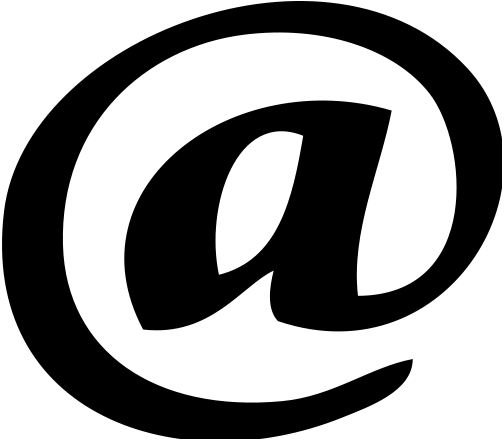Discover the History of Microsoft Outlook Software
The Beginnings of Outlook
Microsoft Outlook has a history that spans more than a decade and continues to live on as one of the most popular personal
communications managers. Much more than just an e-mail client, the program also features schedule, contact and task management for personal and business users around the world.
The early days of Outlook came as a client for Microsoft Exchange. Outlook was available in three flavors: Outlook for MS-DOS, Outlook for Windows 3.x, and Outlook for Macintosh. This availability came with the advent of Microsoft Exchange Server 5.0 and was heralded as a major improvements to the standard Exchange Inbox client and Microsoft Mail.
Image Credit: Wikimedia Commons/EJavanainen
Outlook in the 1990s
Toward the end of the 1990s, two major releases of Outlook helped its use to spread from the corporate environment into the personal office and small business space.
Outlook 97 (aka Outlook 8.0) was added as a client for Microsoft Exchange but also was included in the Microsoft Office 97 application suite. This version popularized the program as a “fully optimized” business mail client that gave users the ability to interact with Exchange Server with early forms of the features such as scheduling that continue to make Outlook a popular application.
A service pack and Internet Mail enhancement to Outlook 97 made it capable of being used by POP mail users, spreading Outlook beyond corporate boundaries into the realm of home and small business users. Outlook 97 also supported Microsoft Mail, the rudimentary mailbox feature that came as part of Windows 3.x.
According to Microsoft’s history of Microsoft Outlook software, Outlook 97 was the first official version of Outlook.
Outlook 98 (aka Outlook 8.5) was an attempt by Microsoft to become the de facto standard for Internet e-mail clients. It featured HTML support and - of course - came with Microsoft Internet Explorer. This program became available in June of 1998 and was supported by Microsoft through 2004.
Outlook in the Early 2000s
Fueled by new versions of the Microsoft Office application suite, Outlook took on some design changes and improvements to its calendar functions in its next three iterations.
Outlook 2000 (aka Outlook 9.0) appeared in 1999 as a client bundled with Microsoft Exchange 2000 and also as part of the Microsoft Office 2000 application suite.
One version of Microsoft Outlook that didn’t gain much traction was Outlook 2002 (version 10) which came as part of the Office XP bundle. Office XP did not seem to be very popular, possibly because many businesses incorrectly believed that the software would only work with Windows XP and did not want to upgrade. Also, for many people, Office XP was too similar to Office 2000, making the transition to the new suite seemingly unnecessary. Outlook 2002 first appeared in May of 2001.
Outlook 2003 (aka Outlook 11.0) came out with Exchange Server 2003 and the Office 2003 bundle. This version of the program came out at the end of 2003 and was a widely accepted upgrade.
Outlook - As We Now Know It
Outlook 2007 (aka version 12) was released at the end of 2006 and was included with the Microsoft Office 2007 bundle. A “To-Do” bar was added and the calendar could now publish to the web. An RSS aggregator, electronic business cards and integration with Windows Desktop Search made the program easier to use.
Outlook 2010. Microsoft skipped version number 13 for its Outlook software. This next step in the history of Microsoft Outlook software was labeled version 14. According to Steve Ballmer, the company wished to avoid the negative repercussions that are associated with the number 13.
This version of Outlook was marked by an updated “ribbon” interface that matched changes to the other Office applications. A “people” pane and some social networking features were also added.
Outlook for Macintosh
Mac Outlook 8 was a Macintosh version of Outlook intended to work as an Exchange client. Rather than coming as part of an official distribution, it - like other Mac Outlook clients up to Outlook 2011 - came in the form of a download starting in November of 1997. Interim versions of the program (Mac Outlook 8.1 and 8.2) served to address cross-platform deficiencies associated with the calendar.
Mac Outlook 2001 became available in June 2001 and was the last version of the Outlook client for Mac until Outlook 2011.
Outlook 2011 was a Macintosh-only version of Outlook that came with the same version number as Outlook 2010 (version 14). This program came as a part of Office 11 for the Apple platform. This version of Outlook was the first fully functional version of Outlook that was not limited for use as a Microsoft Exchange client.
References
Microsoft. “OL97: Microsoft Outlook Version InformationSample contents”, https://support.microsoft.com/kb/172623
“Outlook versions and trivia”, https://www.msoutlook.info/question/200
Cawlwy, Christian. “A History of Microsoft Outlook: From MS-DOS to Office 2010”, https://www.brighthub.com/computing/windows-platform/articles/72649.aspx
Microsoft. “A Brief History of Microsoft’s mail and Exchange clients on the Mac: Part I”, https://blogs.msdn.com/b/gilg/archive/2004/08/18/216777.aspx
Microsoft. “Description of Outlook and Exchange client extensions”, https://support.microsoft.com/kb/286408
Microsoft. “Support Lifecycle Index”, https://support.microsoft.com/gp/lifeselectindex
